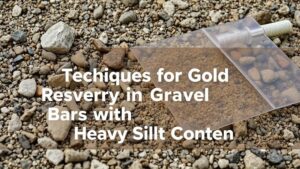Filing Claims for Secondary Minerals Found in Existing Ore Deposits
Filing Claims for Secondary Minerals Found in Existing Ore Deposits
The extraction of minerals from the earth is a complex process governed by various legal, environmental, and economic considerations. One pivotal aspect of this extraction process is the filing of claims, particularly for secondary minerals discovered within existing ore deposits. Secondary minerals, often referred to as by-products, are valuable resources that can significantly enhance the overall profitability of mining operations. This article will explore the intricacies of filing claims for these secondary minerals, addressing key legal frameworks, filing processes, and real-world applications.
Understanding Secondary Minerals
Secondary minerals are defined as minerals that are not the primary target of extraction but can be recovered during the mining process. For example, in a gold mining operation, copper may be extracted as a secondary mineral. The significance of secondary minerals lies not only in their contribution to the total yield of ore but also in their potential market value. In recent years, commodities such as lithium and cobalt–used in batteries–have garnered attention due to their increasing demand.
Legal Framework for Claims
The legal framework surrounding mineral claims varies by jurisdiction but generally encompasses federal, state, and local regulations. In the United States, the General Mining Law of 1872 allows individuals to stake claims on unpatented mining rights on federal land. But, secondary minerals may fall under different regulations depending on how they are defined within existing mining claims.
- Federal Regulations: The Bureau of Land Management (BLM) oversees lands in the West and enforces federal mining laws. It is crucial to understand whether secondary minerals are classified as separate resources under BLM guidelines.
- State Regulations: Individual states have their own mining statutes which often dictate the procedure and requirements for filing claims, including local environmental assessments.
- Local Rules: Municipalities may impose additional regulations or restrictions that must be adhered to when extracting minerals, including permits for secondary mineral recovery.
Filing a Claim for Secondary Minerals
The process of filing a claim for secondary minerals consists of several critical steps. Here’s an outline of the typical process involved:
- Research and Identify: Before filing a claim, it is essential to research existing claims, geological surveys, and historical mining data to identify potential secondary mineral deposits.
- Prepare Required Documentation: Applicants must prepare detailed documentation, including maps, descriptions of the land, and the minerals in question.
- Submit the Claim: Once documentation is complete, claims are submitted to the appropriate federal or state office for review. This often involves paying a filing fee.
- Wait for Approval: Regulatory authorities will typically conduct assessments to ensure compliance with environmental and operational regulations before granting approval.
Case Studies and Real-World Applications
Several mining operations have successfully implemented strategies for extracting secondary minerals to enhance profitability. One notable example is the extraction of rare earth elements (REE) from tailings in existing mines. These elements, crucial for electronics and renewable energy technologies, are often overlooked, yet their extraction can dramatically increase the economic viability of mining projects.
In Canada, a mining company revitalized an old gold mine by recovering lithium from the ore that originally yielded only gold. This not only made the operation more sustainable but also opened up new revenue streams in an evolving market.
Challenges and Considerations
Filing claims for secondary minerals does not come without challenges. Potential concerns include:
- Environmental Impact: Extracting secondary minerals might involve additional mining processes, leading to environmental degradation if not managed responsibly.
- Regulatory Compliance: The complexity of navigating multiple jurisdictions can lead to legal challenges, particularly if there is a lack of clear regulations regarding secondary minerals.
- Market Volatility: The value of secondary minerals can fluctuate significantly due to market demand and geopolitical factors, making them a risky investment.
Actionable Takeaways
For mining companies and independent miners, understanding the intricacies of filing claims for secondary minerals is essential for maximizing resource potential. Here are some actionable takeaways:
- Conduct thorough research on local, state, and federal laws regarding mineral claims.
- Engage with geological experts to identify potential secondary minerals within existing ore deposits.
- Prepare comprehensive documentation to facilitate a successful claim submission.
- Stay informed about market trends for secondary minerals to enhance economic feasibility.
By recognizing the value of secondary minerals and navigating the complex legal landscape associated with their extraction, miners can not only increase profitability but also contribute to the sustainable management of mineral resources. This dual focus on profitability and sustainability is likely to define the future of mining operations globally.



